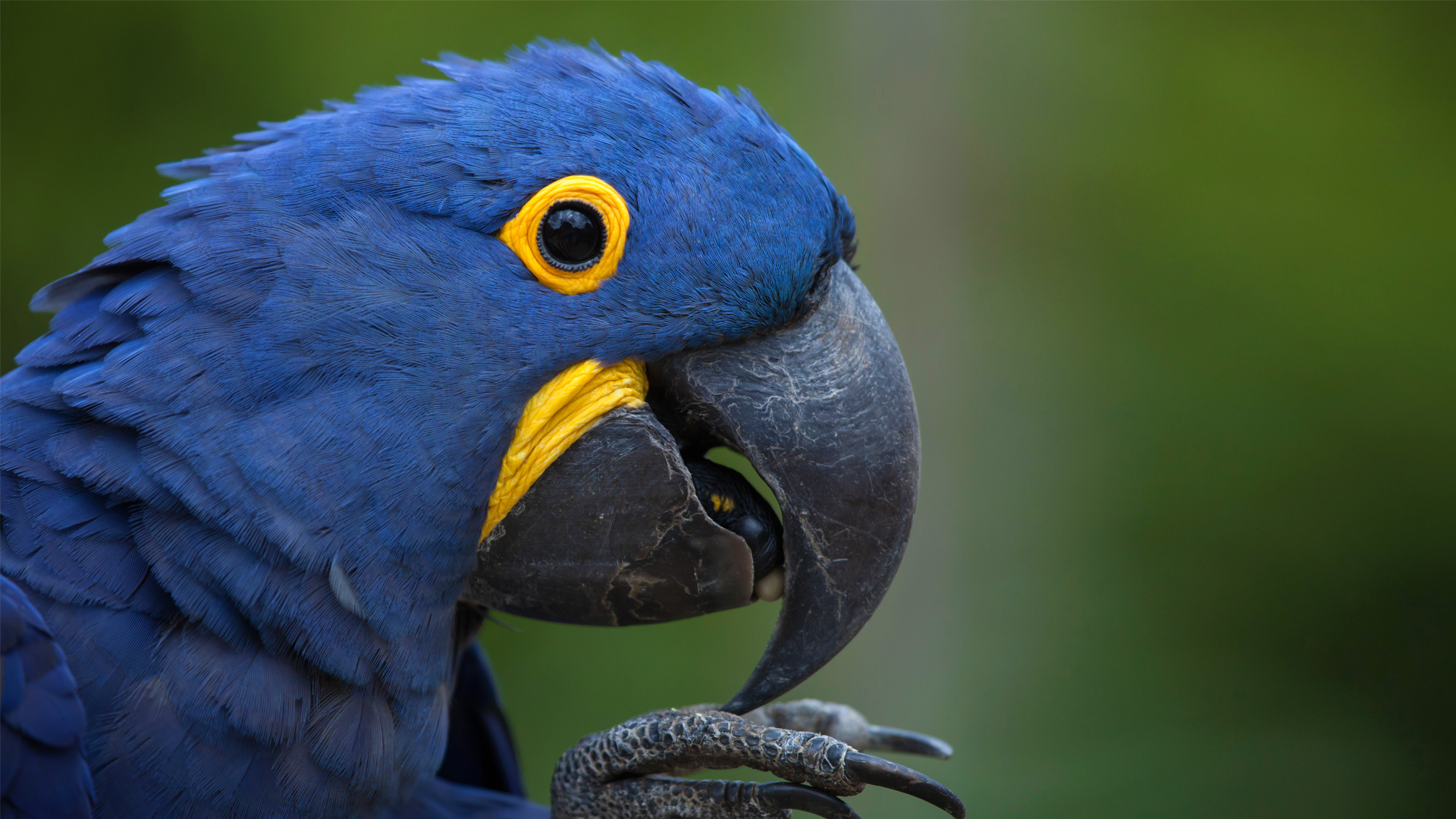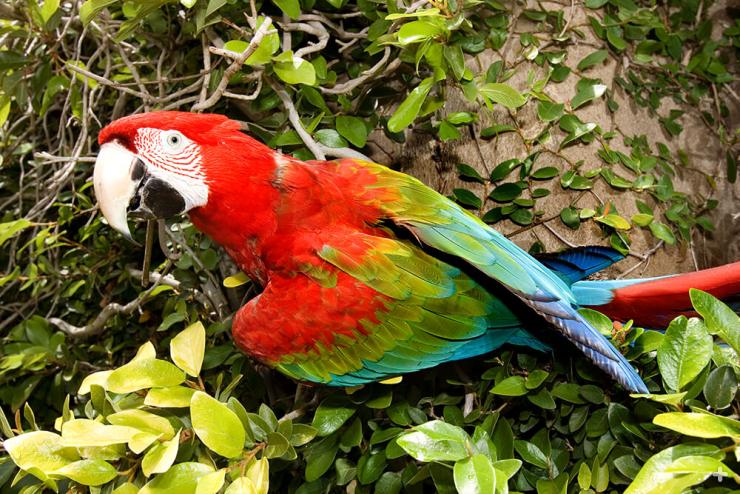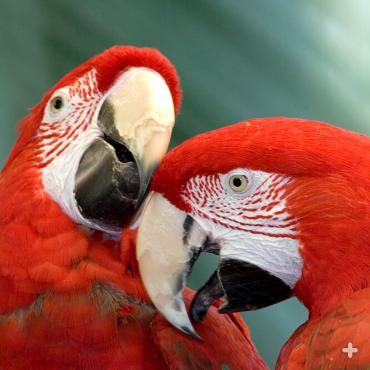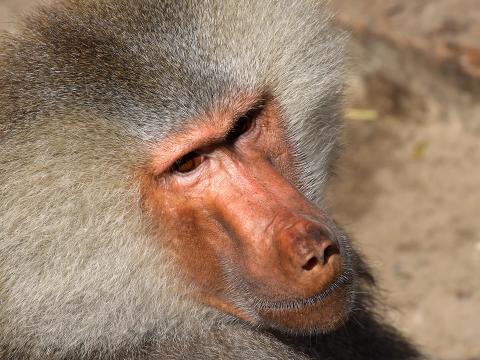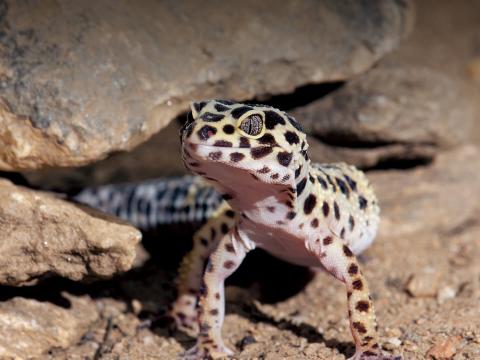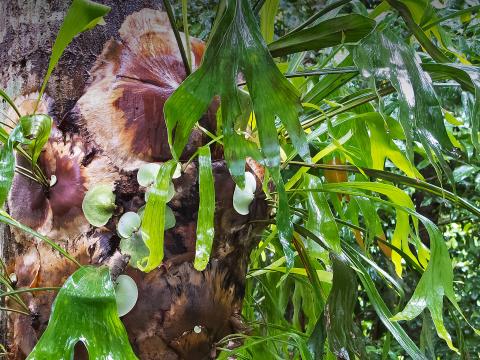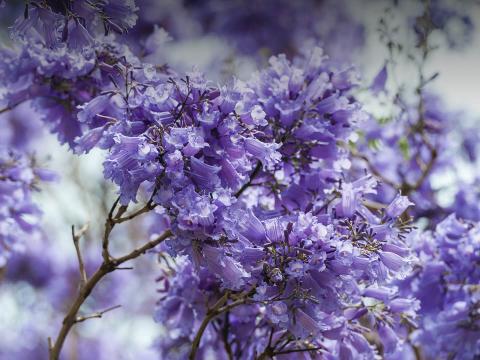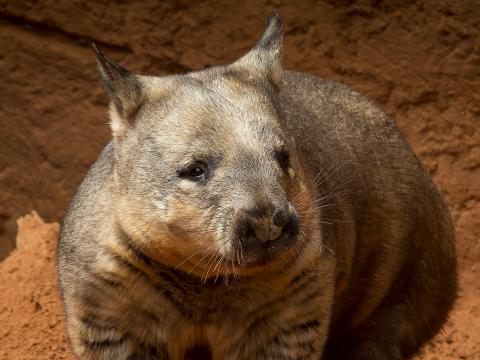Macaw
- CLASS: Aves (Birds)
- ORDER: Psittaciformes
- FAMILY: Psittacidae
- GENERA: 6
- SPECIES: 17
ABOUT
What makes a macaw? Macaws are king-sized members of the parrot family and have typical parrot features. Their large, strong, curved beaks are adapted for crushing nuts and seeds. Their strong, agile toes are used like hands to grasp things. Loud, screeching and squawking voices help make their presence known in dense rainforests. They are also famous for their bright colors, which seem bold and conspicuous to us but actually blend in well with the green leaves, red and yellow fruits, and bluish shadows of the forest homes.
Macaws are adapted for flying through the trees in the forest, with a streamlined body and tail shape and wings that don’t flap deeply. When they come in for a landing, they drop their tail and feet downward and use their wings like brakes to slow down before grasping a perch with their feet. Most macaws nest in holes of trees or in earthen banks and cliff sides.
Macaws are intelligent and curious birds that like to explore and keep busy. They are very aware of their surroundings, which is necessary to keep watch for predators. As social birds, they spend a lot of time interacting with their mates and their family groups. Macaws have been known to use items as tools, and they like to play with interesting objects they find. They examine the objects from different angles, moving them with their feet, testing them with their tongue, and tossing them around. Macaws are also big chewers, something they need to do to keep their beaks in good shape. They can do impressive damage to even very hard wood with their beaks. Most macaws like to take baths, and they play in the water as they splash around.
Screaming is a natural call for macaws. They do it to make contact with one another, to define territory, and even as part of their play. Their calls can be quite earsplitting to humans! Macaws can also imitate sounds, and macaws that live with or near humans often repeat words they hear, practicing to themselves until they get it right.
HABITAT AND DIET
One of the outstanding natural sights in Mexico and Central and South America is a large flock of colorful macaws bursting up from the forest canopy in flight. Macaws live in pairs, family groups, or flocks of 10 to 30, which helps give them protection from predators like large snakes and birds of prey. They usually wake before dawn, preening their feathers and calling to one another, perhaps communicating where they are and what they plan to do next. Then, as a group, they fly up out of the trees to journey to the day’s feeding grounds, often traveling quite a long distance to a grove of trees with ripe fruit. In fact, macaws fly as far as 15 miles (24 kilometers) each day to feed. They feast until midday, when they settle down for more preening and "chatting," then forage more in the afternoon.
Shortly before or after dusk, macaws all take wing again to return to their roosting site, where they call to each other to figure out who sits where. The sitting arrangement can change from day to day! Sometimes squabbles break out, but macaws rarely physically injure each other. Once everyone is settled, they quiet down, fluff out their feathers, and prepare to snooze through the night.
Macaws eat a variety of ripe and unripe fruits, nuts and seeds, flowers, leaves, and stems of plants, and sources of protein like insects and snails. Some specialize in eating the hard fruits and nuts of palm trees. One trick they use for this is to forage in fields where cattle live. The cattle eat the palm nuts, which pass through their digestive system and come out the other end with the nut’s hard coating removed. This makes the nuts softer and easier for the macaws to eat! Macaws also visit riverbanks and cliffs made of clay soil, which they eat. Scientists believe the soil may neutralize any toxic chemicals the birds might eat in seeds or unripe fruits.
FAMILY LIFE
Macaws usually live in pairs, and after the nesting season, in family groups. When adult macaws choose mates, they usually stay together until one of them dies. This close relationship is called a pair bond. The pair reinforces its bond by preening each other’s feathers, sharing food, and roosting together. The bond is so strong that even when the pair flies with a large flock, the two stay close together, with their wings almost touching.
Most macaw pairs breed once a year, and the female lays her eggs in a nest inside a tree hollow or in a dirt hollow on a cliff face. Only the mother does the incubating until the chicks hatch; the father is in charge of bringing food to her.
Once chicks hatch, both parents bring them food. Macaw chicks are helpless at first. Their eyes remain shut for several days, and they are sparsely covered in downy feathers, so they need their parents’ care until they grow their plumage, at about 10 weeks of age. Many times chicks in the same nest compete for food, and most often only the older, stronger chick survives. The fledglings are clumsy at first as they learn to fly, at about three months of age, but once they get the hang of it, they start flying with the adults to forage for food.
Most macaws start out with gray or black eyes when they’re young, which change to brown or yellow as they mature.
CONSERVATION
Since ancient times, macaws have been popular as pets. Their colorful plumage, large size, and ability to talk have made them “show birds” and “attention getters” around the world. Unfortunately, trapping for the pet trade is a major factor in macaw population declines. Chicks can often bring in thousands of dollars from collectors to the trappers, giving them incentive to continue this practice.
Several macaws are now listed as endangered or at critical risk, and some have become extinct altogether or extinct in their native habitat. Logging, farming, and development have reduced macaw habitat. For example, the Lear’s or indigo macaw Anodorhynchus leari is found only in a tiny part of northeastern Brazil and depends on the nuts of licuri palms for food. The clearing of this palm forest has severely reduced the Lear’s macaw’s habitat. The last known Spix’s macaw Cyanopsitta spixii disappeared in 2000, and the species may be extinct in its native habitat. Although there are over 100 Spix’s macaws in private collections, attempts to reintroduce some of these birds into their native habitat have not yet worked out.
Conservationists are trying different strategies for helping macaws, such as offering money to local inhabitants for leaving the birds and their habitat alone or using tourist fees to buy up and protect areas of forests where visitors can see the birds. Many reserves have been created in macaw habitat that include lodges built for tourists interested in seeing these colorful birds. The lodges provide jobs for the local people, helping them earn a living by working with the forest rather than clearing it. Some programs have even hired macaw hunters as guides, transforming them from poachers to protectors. Many organizations continue to work to help conserve macaws.
San Diego Zoo Wildlife Alliance manages the Cocha Cashu Biological Station, a remote field station in a pristine rainforest area of Peru’s Manu National Park. From here we hope to learn more about macaws and other rainforest bird, among other rainforest wildlife. By supporting San Diego Zoo Wildlife Alliance, you are our ally in saving and protecting wildlife worldwide.

